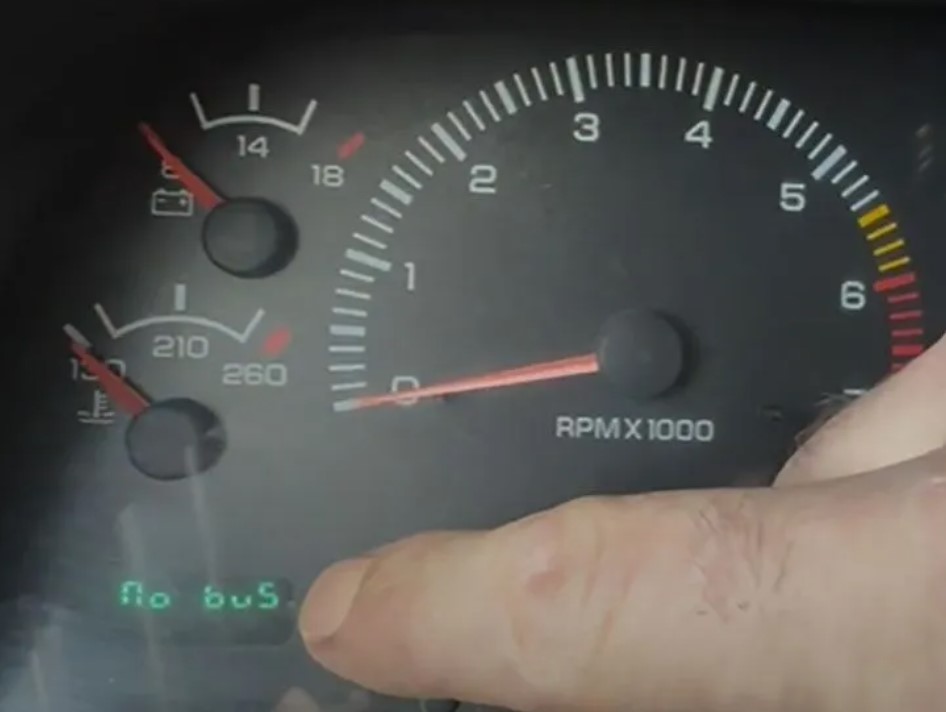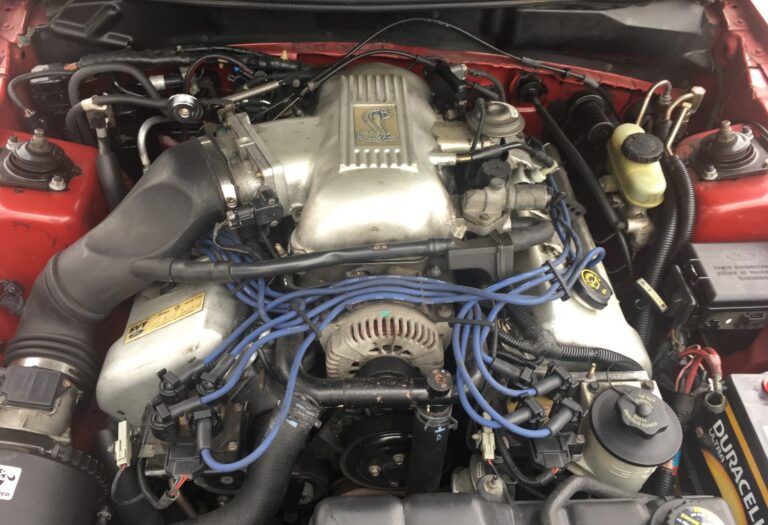What Does No Bus Mean On A Car? A Complete Breakdown
In this article, we’ll explain What Does No Bus Mean On A Car? Encountering the message “No Bus” on your car’s dashboard can be puzzling and concerning. This term is pivotal in understanding the health of your car’s electronic system. Essentially, it signifies a breakdown in communication among the different modules that control various car functions. Addressing this issue promptly is essential for maintaining your car’s optimum performance and longevity.
Key Takeaways
- “No Bus” indicates a communication issue in the vehicle’s onboard diagnostic system.
- It can lead to various malfunctions in the car’s performance.
- Regular maintenance and early diagnosis are crucial to address this issue.
What Does No Bus Mean On A Car?
“No Bus” on a car‘s dashboard indicates a communication problem within the vehicle’s onboard diagnostic system. It means that the computer systems controlling various car functions are unable to communicate with each other.

Understanding “No Bus” in Your Car
What It Significantly Implies?
The term “No Bus” primarily refers to a lapse in the communication network within your car’s onboard diagnostic system. This network, known as the Controller Area Network (CAN) bus, is a robust system designed to facilitate communication between various electronic control units (ECUs). When the dashboard displays this message, it indicates that one or more ECUs are not communicating effectively.
The Technical Perspective
From a technical standpoint, “No Bus” points to potential faults in the wiring harness, connectors, or the ECUs themselves. This problem can stem from various issues like damaged wires, corroded connectors, or even software glitches within the ECUs.
Causes and Diagnostics
Common Causes of “No Bus” Errors
Several factors can lead to a “No Bus” error. These include:
- Faulty wiring or loose connections.
- Damaged or malfunctioning ECUs.
- Software errors in the car’s computer systems.
Diagnostic Approaches
Professionals use specialized diagnostic tools to identify the exact cause of the “No Bus” error. These tools can read error codes from the car’s computer, providing insights into which part of the network is failing.
Impact on Car Functionality

Immediate Effects
A “No Bus” error can disrupt various functionalities of your car, ranging from minor inconveniences to major operational issues. This may affect the performance of the engine, transmission, airbags, and other critical systems.
Long-Term Consequences
If not addressed promptly, this error can lead to more significant problems, potentially compromising the safety and efficiency of your vehicle.
Preventive Measures and Solutions
Regular Maintenance
Regular checks and maintenance of your car’s electrical system can prevent “No Bus” issues. This includes inspecting wiring and connections for any signs of wear or damage.
Professional Repairs
In case of a “No Bus” error, it’s advisable to consult a professional mechanic. They can accurately diagnose and fix the problem, ensuring your car’s safety and reliability.
Impact on Vehicle’s Electrical Systems
Communication failures in a car, similar to the “No Bus” error, profoundly impact the vehicle’s electrical systems. These systems are interconnected, relying on seamless communication to function correctly.
When there is a breakdown in this communication, it can lead to malfunctions in critical components such as the engine control unit, transmission control module, and safety features like airbags.
For example, if the transmission control module cannot communicate effectively, it may result in gear-shifting problems or reduced fuel efficiency.
The Ripple Effect on Car’s Operation
The ripple effect of such communication failures extends beyond just the immediate systems. It can affect the overall operation of the vehicle, leading to decreased performance, increased emissions, and potential safety hazards.
In some cases, the car might exhibit unpredictable behavior like sudden stalling or failure to start. Regular diagnostics and early intervention are key to preventing these issues from escalating into more significant problems.
What Are the Signs of a Failing Car Communication System?

Early Warning Signs
Recognizing the early warning signs of a failing car communication system is crucial for timely intervention. These signs often include unusual dashboard warnings, erratic behavior of the instrument cluster (like flickering lights or gauges), and unusual driving characteristics (such as unexpected gear shifts). Additionally, drivers might notice a decrease in fuel efficiency, unresponsive controls, or an overall drop in vehicle performance.
Importance of Heeding Warning Signals
Ignoring these warning signals can lead to more severe consequences, including critical system failures. For instance, a malfunction in the communication system could mean that the airbags might not deploy in an accident.
It’s vital to consult with a professional mechanic as soon as these signs are noticed. They can perform a thorough diagnosis to pinpoint and rectify the issues, ensuring the vehicle’s safe and efficient operation.
What Steps Should Be Taken When a Car Shows Communication Errors?
Immediate Actions to Take
When a car displays signs of communication errors, the first step is to perform a basic check of the vehicle’s electrical components. This includes inspecting the battery, checking for loose or corroded connections, and ensuring that all fuses are intact. Sometimes, simple issues like a weak battery or a loose wire can be the root cause of the communication error.
Seeking Professional Assistance
If the basic checks don’t resolve the issue, it’s crucial to seek professional assistance. Auto repair professionals have specialized diagnostic tools that can read and interpret the car’s error codes.
These tools provide a detailed insight into the health of the car’s communication system, allowing for accurate and effective repairs. It’s important to address these issues promptly to avoid any potential safety risks or further damage to the vehicle.
How to Diagnose and Repair Vehicle Communication Issues?

Diagnostic Process
Diagnosing vehicle communication issues requires a systematic approach. Technicians often start with a scan tool to read any diagnostic trouble codes (DTCs) stored in the car’s computer.
These codes provide clues about which part of the communication network is malfunctioning. The technician may also perform a physical inspection of the wiring and connectors to look for signs of damage or wear.
Repair and Resolution
Once the problem is diagnosed, the repair process can vary depending on the underlying issue. It might involve repairing or replacing damaged wiring, updating the car’s software, or replacing faulty electronic components.
In some cases, a simple reset of the car’s computer system can resolve the issue. These repairs must be carried out by skilled professionals to ensure the vehicle’s safety and reliability.
What Preventive Measures Can Avoid Communication Failures in Cars?
Regular Maintenance and Inspections
Regular maintenance is key to preventing communication failures in cars. This includes routine checks of the electrical system, ensuring that all connections are secure and that wires are in good condition. Regular software updates for the vehicle’s computer systems can also prevent issues related to outdated software.
The Role of Preventive Care
Preventive care plays a crucial role in avoiding major repairs down the line. It involves being proactive about vehicle maintenance and addressing small issues before they escalate.
This not only helps in maintaining the vehicle’s performance but also extends its lifespan and ensures safety on the road. Regular visits to a trusted mechanic for check-ups and diagnostics can make a significant difference in the overall health of the vehicle’s communication system.
Conclusion
In summary, the “No Bus” message is a critical alert indicating communication issues in your car’s diagnostic system. Understanding its causes and impacts is essential for any car owner. Regular maintenance and professional diagnostics are key to addressing this problem effectively, ensuring the smooth and safe operation of your vehicle.
People Also Ask
If a “No Bus” error is displayed, will my car fail an emissions test?
A “No Bus” error can potentially lead to a failed emissions test, especially if it affects the engine control or exhaust systems. It’s advisable to resolve any such errors before undergoing an emissions test.
Can software updates fix “No Bus” errors?
In some cases, software updates can resolve “No Bus” errors, especially if they’re related to bugs or glitches in the vehicle’s computer systems. It’s important to keep your car’s software updated as part of its regular maintenance.
Are certain car models more prone to “No Bus” errors than others?
While any vehicle with a CAN bus system can potentially display a “No Bus” error, some models might be more prone due to design complexities or known issues with specific components. Researching your car model and staying informed about common issues can be helpful.
Can a weak battery cause a “No Bus” error?
Yes, a weak or failing battery can sometimes cause a “No Bus” error. The battery is crucial for providing stable power to the car’s electronic systems, and any inconsistency can disrupt communication.

Welcome to the exhilarating world of Matt Rex, a professional car racer turned renowned vehicle enthusiast. Immerse yourself in his captivating blog as he shares heart-pounding adventures, expert reviews, and valuable insights on cars, trucks, jets, and more. Fuel your passion for speed and discover the beauty of vehicles through Matt’s engaging stories and meticulous expertise. Join the ever-growing community of enthusiasts who find inspiration and expert advice in Matt Rex’s blog—a digital hub where the thrill of speed meets the pursuit of knowledge.





![Can Am Defender Check Engine Light? [Decoding the Signal]](https://www.turbochaos.com/wp-content/uploads/2023/11/Can-Am-Defender-Check-Engine-Light-768x550.jpg)

![Is The Mercruiser 3.0 A Good Engine? [Answered]](https://www.turbochaos.com/wp-content/uploads/2023/11/Is-The-Mercruiser-3.0-A-Good-Engine-768x519.jpg)